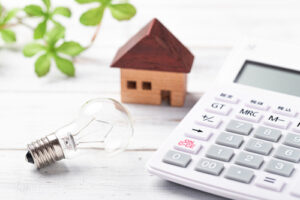
Businesses spend about $2.14 per square foot per month on utility costs. The average family spends about $120 per month on just electricity each month – and that’s not even including water and gas. And utility prices overall are on the rise. The National Energy Assistance Directors Association estimates that energy prices have increased by about 30 percent since 2020 – and they could be poised to rise even more in the coming months and years.
That’s one of the biggest motivators for taking measures to decrease utility costs: saving money. But there are other important reasons as well. For instance, reducing utility costs means that you’re also reducing your total output – so there are sustainability and environmental benefits as you lower your carbon footprint. This can all turn into a marketing message for a firm, as an increasing number of consumers prefer to do business with companies that are factoring sustainability into their operations.
Want to save money on utilities, but you’re not sure where to get started? Saving money on utilities isn’t so much about one big thing, but doing a lot of little things that can all add up in the long run. In this post, we’ll cover some tips to help you get started. Here’s a closer look:
Tips for Saving Money on Utilities
Conduct an Energy Audit/Utility Rate Analysis
If you’re serious about exploring ways to decrease your energy costs, one of the best things you can do is conduct an energy audit on the property to identify where energy is being wasted and key areas where you can improve. While you can perform an energy audit yourself, for the best results, it’s suggested that you either work with your energy company or even bring in a consultant to handle this.
Another option is doing a utility rate analysis. While an energy audit measures the energy efficiency, a utility rate analysis will assess energy usage. It will examine utility bills to identify errors, irregularities, or other ways to reduce overall utility costs without impacting the operations or conditions of the building. Taking action based on results from a utility rate analysis has the potential to save a commercial facility tens of thousands of dollars each year.
Invest in Smart Thermostats
Per a study from the United States Department of Energy, you can save up to 10 percent on your heating and cooling bills by adjusting the thermostat anywhere from seven to 10 degrees for about eight hours per day. It should be fairly easy to program in a commercial property. While most of your staff are likely in the building working from 9 a.m. to 5 p.m., you can make this adjustment after hours and overnight when comfort isn’t as much of a priority.
We also suggest investing in smart thermostats that can be programmed remotely and in real time. If your property has multiple thermostats, we suggest investing in smart thermostats that can also detect when someone is in the vicinity and activate the HVAC system accordingly. Many smart thermostats have an “away” mode feature that adjusts the temperature automatically when a person has not been detected for an extended period of time.
Upgrade to LED Lighting
If your facility is still being lit by incandescent bulbs, change to LEDs immediately. This is one of the easiest and most effective ways to reduce your energy output, as LED bulbs are up to 80 percent more efficient than conventional ones. In addition to improved efficiencies, LED bulbs last longer, are safer, and are more durable.
Adjust Water Heater Temperature
Adjusting the temperature on your property’s water heaters is another surefire way to save money on utility costs. Most water heaters come with thermostats set at up to 140 degrees Fahrenheit, which is more than enough heat to carry out hand washing, dishwashing, and other activities where hot water is needed. We suggest lowering the temperature to the 120-degree mark. All you need to do is find the dial on the water heater and turn it down. Not only is this easy to do, but the savings can be in the hundreds each year, as the heater won’t be working as hard as often to bring the temperature of water in the appliance up to the 140 degree temperature.
Invest in a Sprinkler Rain Sensor
How many times have you driven by a commercial property after significant rainfall and seen the sprinklers going off? Probably far too often. When this happens, it is a waste of both water and money. The good news is that it’s incredibly easy to prevent. All you need to do is invest in a rain sensor and integrate it with your sprinkler system. When a rain sensor gets wet enough, it’ll communicate to the sprinkler system that Mother Nature has done its job and watering isn’t necessary. But when it dries out, it will again tell the system that watering should take place. A sensor can save money, conserve water, and also reduce wear and tear on your irrigation system by only running when it’s absolutely necessary.
Power Down/Unplug Electronics
While idle mode or sleep mode can save energy, appliances in said modes are still likely to draw “phantom energy” just from being plugged in. This is electricity that appliances use without actually being used. At the end of the day, it’s a good habit to power down and unplug appliances to avoid this phantom energy draw.
Contact Green Line Rates Today
For more information on saving money on utilities on your commercial property, contact Green Line Rates today. We specialize in conducting thorough utility audits on commercial properties to help you save money and improve your bottom line without impacting how your facility or workforce functions. Contact us today for more information and to get started saving energy on your property.
